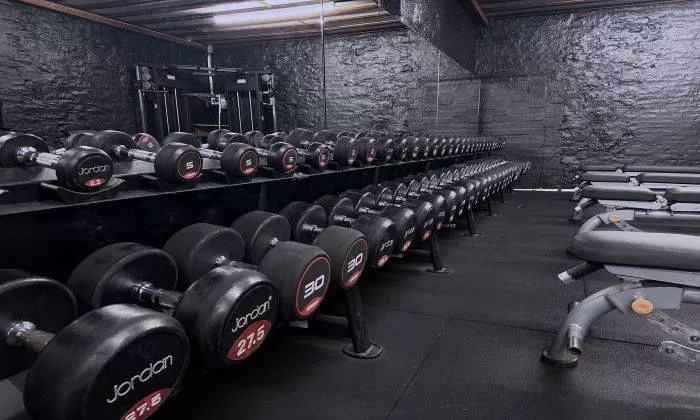High-Intensity Interval Training (HIIT) has gained popularity for its efficiency in burning calories, improving cardiovascular fitness, and promoting overall health. Following a HIIT workout, proper nutrition plays a crucial role in replenishing energy stores, supporting muscle recovery, and maximizing the benefits of exercise. In this comprehensive guide, we will explore the optimal post-HIIT nutrition strategies, including the types of foods to eat, their timing, and the importance of hydration, to help you refuel and recover effectively.
HIIT Exercise
HIIT involves short bursts of intense exercise followed by brief periods of rest or low-intensity activity. This type of training challenges both aerobic and anaerobic systems, leading to increased calorie expenditure, improved cardiovascular endurance, and enhanced metabolic rate. HIIT workouts can vary in duration, intensity, and exercises, but they typically last between 20 to 30 minutes and include exercises such as sprints, burpees, jump squats, and high knees.
Post-HIIT Nutrition Goals
After completing a HIIT workout, your body has increased energy demands and requires proper nutrients to support recovery and repair. The key goals of post-HIIT nutrition include:
- Replenishing Glycogen Stores: HIIT depletes glycogen, the primary fuel source for high-intensity exercise. Consuming carbohydrates post-workout helps replenish glycogen stores and restore energy levels for future workouts.
- Supporting Muscle Repair and Growth: HIIT workouts cause micro-tears in muscle fibers, leading to muscle damage. Adequate protein intake post-workout provides essential amino acids necessary for muscle repair, recovery, and growth.
- Hydration: HIIT workouts often result in increased sweat loss and fluid depletion. Rehydrating post-workout helps restore fluid balance, regulate body temperature, and support optimal performance and recovery.
- Minimizing Muscle Soreness: HIIT workouts can lead to delayed onset muscle soreness (DOMS) due to muscle damage and inflammation. Consuming anti-inflammatory foods rich in antioxidants may help reduce muscle soreness and accelerate recovery.
Best Foods to Eat After HIIT Exercise
Lean Protein Sources:
Chicken breast
Turkey
Fish (salmon, tuna)
Lean beef or pork
Eggs (especially egg whites)
Plant-based protein sources (tofu, tempeh, legumes)
Complex Carbohydrates:
Whole grains (brown rice, quinoa, oats)
Sweet potatoes
Fruits (bananas, berries, oranges)
Vegetables (leafy greens, broccoli, bell peppers)
Legumes (beans, lentils)
Healthy Fats:
Avocado
Nuts and seeds (almonds, walnuts, chia seeds)
Nut butter (peanut butter, almond butter)
Olive oil
Fatty fish (salmon, mackerel)
Hydrating Foods:
Water-rich fruits (watermelon, cucumber, oranges)
Coconut water
Herbal teas
Homemade smoothies or shakes with water or milk
Antioxidant-Rich Foods:
Berries (blueberries, strawberries, raspberries)
Dark leafy greens (spinach, kale)
Nuts and seeds
Colorful vegetables (tomatoes, carrots, bell peppers)
Green tea
Post-HIIT Nutrition Timing
The timing of post-HIIT nutrition is crucial for maximizing recovery and replenishing energy stores. Aim to consume a balanced meal or snack containing carbohydrates and protein within 30 minutes to two hours after completing your workout. This post-exercise window, often referred to as the “anabolic window,” is when your body is most receptive to nutrient uptake and utilization, facilitating muscle repair and glycogen replenishment.
Sample Post-HIIT Meal Ideas:
Grilled chicken breast with quinoa and steamed broccoli
Salmon salad with mixed greens, avocado, and olive oil dressing
Turkey and vegetable stir-fry with brown rice
Greek yogurt parfait with berries, almonds, and a drizzle of honey
Whole grain wrap filled with lean turkey, hummus, spinach, and sliced veggies
Practical Tips for Post-HIIT Nutrition:
Prioritize Protein: Aim to include a high-quality protein source in your post-HIIT meal or snack to support muscle repair and growth. Aim for approximately 20-30 grams of protein per serving, depending on your individual needs and goals.
Choose Whole Foods: Opt for whole, minimally processed foods rich in nutrients, vitamins, and minerals. Avoid overly processed or refined foods high in added sugars, unhealthy fats, and artificial ingredients.
Stay Hydrated: Drink plenty of water before, during, and after your HIIT workout to replace fluids lost through sweat and support hydration. Consider incorporating hydrating foods and beverages into your post-workout routine to replenish electrolytes and maintain fluid balance.
Listen to Your Body: Pay attention to hunger cues, energy levels, and cravings post-workout to determine your nutritional needs. Experiment with different food combinations and timing to find what works best for you and supports your recovery goals.
Plan Ahead: Prepare your post-HIIT meals and snacks in advance to ensure you have nutritious options readily available when hunger strikes. Consider meal prepping, batch cooking, or packing portable snacks to take with you on the go.
Conclusion
In conclusion, proper nutrition plays a crucial role in maximizing the benefits of HIIT exercise and supporting recovery and performance. By consuming a balanced meal or snack containing carbohydrates, protein, and healthy fats after your workout, you can replenish energy stores, support muscle repair, and promote overall health and well-being. Experiment with different post-HIIT meal ideas, timing strategies, and hydration practices to find what works best for you and enhances your HIIT workout experience. Remember to listen to your body, stay hydrated, and prioritize whole, nutrient-dense foods to fuel your fitness goals and optimize your results.
https://www.gtehy.com/archives/28092


